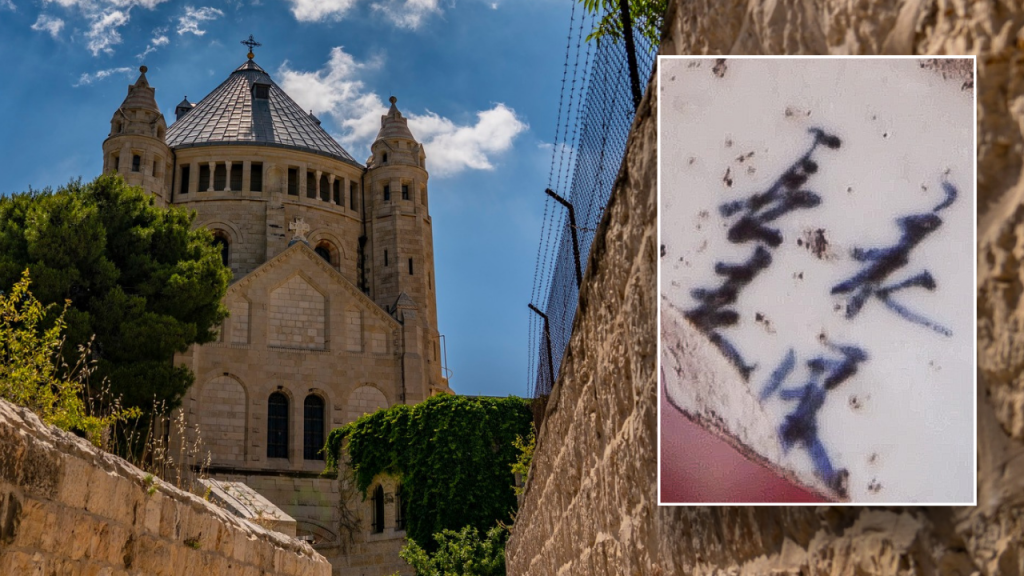The Israeli Antiquities Authority (IAA), in collaboration with the Protestant Institute of Archaeology, has unearthed a remarkable artifact at the historically significant site of Mount Zion: a porcelain bowl bearing the oldest-known Chinese inscription found in Israel. This discovery, dating back to the 16th century during the Ming Dynasty, sheds light on the extensive trade networks and cultural exchanges between the Ottoman Empire and Imperial China. The bowl, serendipitously discovered by archaeologist Michael Chernin during routine site preparations, features an inscription that reads, “Forever we will guard the eternal spring.” This seemingly simple phrase carries profound implications for understanding the global connections of the time.
The discovery of the bowl is particularly significant given the context of Mount Zion’s historical and religious importance. Revered by both Christians and Jews, Mount Zion holds a prominent place in biblical narratives. Christians believe the Upper Room, where the Last Supper took place, is located on Mount Zion, while Jewish tradition identifies it as the resting place of the Ark of the Covenant during King David’s reign. The presence of a Chinese artifact in such a religiously charged location underscores the interwoven nature of global trade and cultural dissemination during this period. The bowl serves as a tangible link between distant empires, demonstrating how goods and ideas traversed vast geographical distances.
While the excavation site at Mount Zion has predominantly yielded artifacts from the Second Temple period and the Byzantine era, the Chinese bowl represents an unexpected connection to a more distant past and a different culture. The inscription, a testament to the careful preservation of the bowl and its journey across continents, offers a glimpse into the intricate relationships between empires. The bowl’s presence in Jerusalem suggests a thriving trade network that extended from the heart of the Ming Dynasty in China to the bustling markets of the Ottoman Empire. This network facilitated the exchange not just of goods, but also of ideas, beliefs, and artistic styles, enriching the cultural landscape of both regions.
The discovery of the Chinese bowl adds a new dimension to the understanding of trade relations between the Ottoman Empire and Imperial China. Historical records, including Ming Dynasty annals and travelogues of merchants, corroborate the existence of robust trade links. These annals document numerous official Ottoman delegations visiting the imperial court in Beijing during the 15th-17th centuries, indicating a high level of diplomatic and economic exchange. Moreover, writings by Chinese scholars, such as Ma Li in 1541, describe the presence of Chinese merchant communities in coastal cities like Beirut and Tripoli, as well as mentioning major regional centers like Jerusalem, Cairo, and Aleppo. This textual evidence aligns with the archaeological find, painting a vivid picture of the interconnectedness of these empires.
The porcelain bowl, likely produced between 1520 and 1570, represents a tangible piece of evidence supporting the historical narratives of trade and cultural exchange. While previous archaeological finds in Israel have unearthed ancient Chinese pottery, this bowl marks the first instance of a Chinese inscription being discovered on such an artifact. This inscription, while brief, provides a unique insight into the cultural values and beliefs associated with the object. The phrase “Forever we will guard the eternal spring” suggests a reverence for nature and a commitment to preserving resources, potentially reflecting a broader cultural philosophy. It also raises intriguing questions about the specific meaning and context of the inscription, inviting further research and interpretation.
In conclusion, the discovery of the 16th-century porcelain bowl with its Chinese inscription at Mount Zion represents a significant archaeological find. It not only attests to the far-reaching trade networks connecting the Ottoman Empire and Imperial China but also highlights the cultural exchange that accompanied these commercial interactions. The bowl, with its simple yet evocative inscription, serves as a tangible reminder of the interconnectedness of ancient civilizations and the enduring power of material culture to illuminate the past. Its presence at Mount Zion, a site steeped in religious significance for both Christians and Jews, adds another layer of complexity and intrigue to this remarkable discovery, underscoring the global dimensions of history and the enduring legacy of cultural exchange. The bowl’s unexpected discovery provides valuable insights into the intricate historical tapestry of trade, cultural exchange, and religious significance that converged at Mount Zion.










